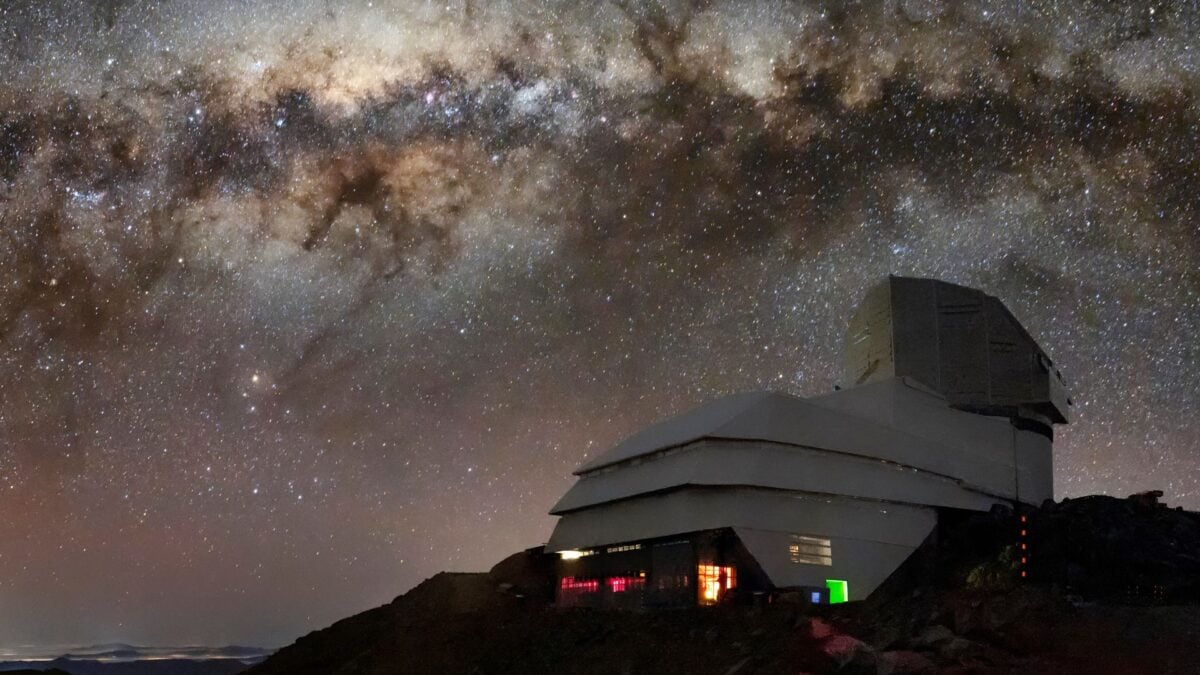A state-of-the-art telescope nearly 25 years in the making will finally reveal its first images on Monday, June 23, and you can watch the event in realtime.
The Vera C. Rubin Observatory, perched atop a mountain in the Chilean Andes,boasts the largest digital camera ever built for astronomy. The telescope, overseen by the National Science Foundation (NSF) and the Department of Energy (DOE), will use this car-sized, 3.2-gigapixel camera to capture ultra-high-definition images and videos of the cosmos. During Monday’s event, the NSF and DOE will display Rubin’s first images to the public and screen one of the observatory’s high-resolution time-lapse “movies” of the visible sky.
You can participate by tuning into a livestream or attending one of the in-person watch parties at museums, universities, and planetariums around the world. The observatory will begin livestreaming the event at 11 a.m. ET, and you can watch it right here. You can also use the interactive map on the observatory’swebsiteto find a watch party near you.
More than two decades after the Rubin observatory was firstconceivedin a “back-of-the-napkin” sketch, construction on this huge telescope is finally nearing completion. Monday’s event marks the beginning of the observatory’s ambitious science operations. Later this year, Rubin will kick off the Legacy Survey of Space and Time (LSST)—an unprecedented decade-long survey of the night sky.
This endeavor will produce 60 petabytes of data that will help scientists uncover the true natures of dark matter and dark energy, catalog the solar system, explore the changing sky, and understand the structure and function of our Milky Way galaxy. Rubin will use its 27.6-foot (8.4-meter) Simonyi Survey telescope—whose unique three-mirror designincludesthe largest convex mirror ever made—to observe the cosmos on an automated schedule. Each 30-second exposure will cover an area about 45 times the size of the full moon. The enormous LSST camera will capture wide-field images and stitch them together to create a complete view of the southern sky every three nights.
Dedicated computer facilities will process Rubin’s data in real time and issue global alerts of changes in the sky within minutes of detection. The observatory’s findings will be funneled into a massive archive that will vastly increase the amount of data available to scientists.
Researchers led by astronomer Meg Schwamb at Queen’s University Belfastrecently estimatedthat Rubin could triple the number of known near-Earth objects (NEOs) from about 38,000 to 127,000, detect ten times more trans-Neptunian objects than currently cataloged, and provide colorful, detailed observations of more than 5 million main-belt asteroids—up from roughly 1.4 million. Papers describing these predictions and the software Schwamb and her colleagues developed to make them, calledSorcha, are currently available on the preprint serverarXiv.
“With this data, we’ll be able to update the textbooks of solar system formation and vastly improve our ability to spot—and potentially deflect—the asteroids that could threaten Earth,” said Mario Juric, a member of the team and an astronomer at the University of Washington, in a universitystatement.
In many ways,the Rubin observatory will carry on the legacy of its namesake, astronomer Vera Rubin.Her work helped prove the existence of dark matter, a paradigm-shifting finding for the field of astronomy. What’s more, she published over 100 scientific papers, conducted groundbreaking research on spiral galaxies and galaxy rotation, and served as a trailblazer for women in science. Like Rubin the astronomer, the Rubin observatory will help usher the field into a whole new era of exploration and discovery.
With its cutting-edge capabilities, Rubin’s first images are sure to dazzle. Monday’s event is only the beginning of this observatory’s mission to map the cosmos in unprecedented detail, unlocking new insights into the secrets of the universe.
Get the best tech, science, and culture news in your inbox daily.
News from the future, delivered to your present.
Please select your desired newsletters and submit your email to upgrade your inbox.
Astronomers have confirmed the existence of a companion star in a tight orbit around Betelgeuse, resolving a long-standing mystery about the star’s varying brightness.
The object appears to be older than our solar system itself.
The presence of apparent biological signatures on Venus has left UK-based researchers chasing down bacterial life in the planet's clouds.
A new study on the structure of ice formed in space overturns a decades-long consensus in astronomy.
This theory could finally solve one of the biggest mysteries in cosmology.
This cosmic visitor is now officially named 3I/ATLAS, and it appears to be a comet from another solar system.



 Motivational
Motivational 22 Jul, 2025
22 Jul, 2025 Daniel Collins
Daniel Collins